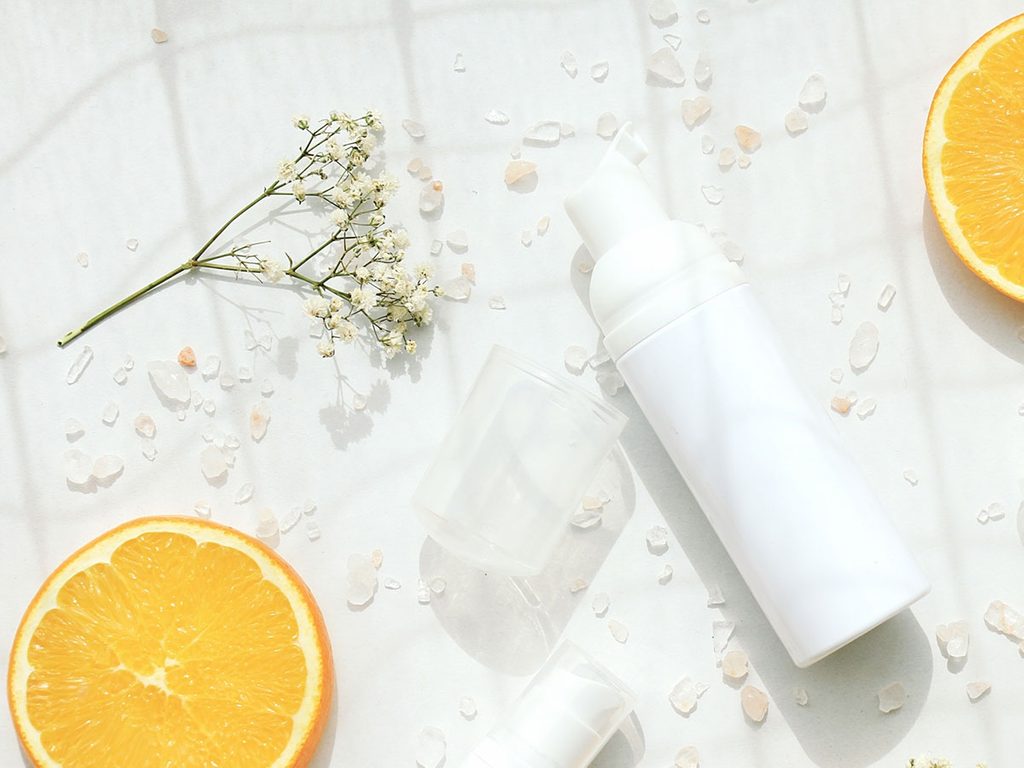How to Use Alpha-Hydroxy Acids to Reduce Wrinkles

Minimize the signs of aging—wrinkles, fine lines, age spots—with acids derived from foods and plants. Here's what you need to know.
Alpha-hydroxy acids (AHAs) are available in a staggering variety of skin lotions and cleansers — from pricey spa formulas to bargain-priced drugstore brands. Derived from a variety of natural ingredients — including citric acid from oranges and lemons, glycolic acid from sugarcane, lactic acid from milk, malic acid from apples, pyruvic acid from papayas, and tartaric acid from grapes — they’re a natural way to exfoliate dead skin layers.
How Do AHAs Work?
AHAs work by gently dissolving the intercellular “glue” that makes old skin cells stick to the epidermis. The result: The outermost layer of your skin looks brighter and finer. “This is one of my favourite ingredients because it improves skin texture, tone, fine lines, as well as acne,” says Jeanine Downie, MD, a board-certified dermatologist in Montclair, NJ.
These skin smoothers may also stimulate the production of skin-supporting collagen and elastin. Some dermatologists also believe that AHAs enhance the skin’s moisture-retaining ability so the tissue maintains its soft, padded firmness. The downside: AHAs make skin extra-sensitive to the sun, so Dr. Downie recommends using them only at night and making sure to apply a broad-spectrum SPF 30 sunscreen (preferably mineral sunscreen) every morning.
Which one’s right for me?
With so many types of AHA products on the market, these professional tips can help you choose the best one for you:
1. Don’t let “low” concentrations fool you.
AHA products sold over the counter usually have AHA concentrations that are below 10 percent. They’re gentle (provided you follow the label directions) and designed for regular use. “Something at this concentration will still lightly exfoliate and is great for daily use,” says Dr. Downie.
2. Be patient–and realistic.
Drugstore wrinkle smoothers are gentle and slow. It can take several months to see a visible difference in fine lines, skin tone or pores.
Stick with one product. Use one product containing AHAs at a time–not a lotion and a cleanser, for example. “That can be too irritating for all but very oily skin,” says Dr. Downie. Also, don’t combine a drugstore product with a prescription wrinkle cream or one purchased at the doctor’s office. Too much exfoliation will leave your skin red and irritated.
3. Use sparingly.
A dime-size amount is enough for your whole face. Using too much can lead to redness, burning and irritation.
4. Avoid the eye area.
Don’t use AHAs on the delicate tissues surrounding the eyes unless the cream is specially formulated for that use. Facial products are too strong and lack the moisturizers needed for these areas. (Instead, apply one of these amazing eye creams.)
5. Need faster results? See a dermatologist.
At the dermatologist’s office you get a chemical peel using AHAs with concentrations of 45 percent or higher. “These can be done as often as every four to six weeks and you’ll see results after just a few treatments,” says Dr. Downie. Remember, the higher the concentrations mean faster results, but also more downtime. Expect to have some redness and peeling for about four days after a treatment with 45 percent AHA; longer if the concentration is even higher.
Next, learn the truth about antioxidants and your skin.




